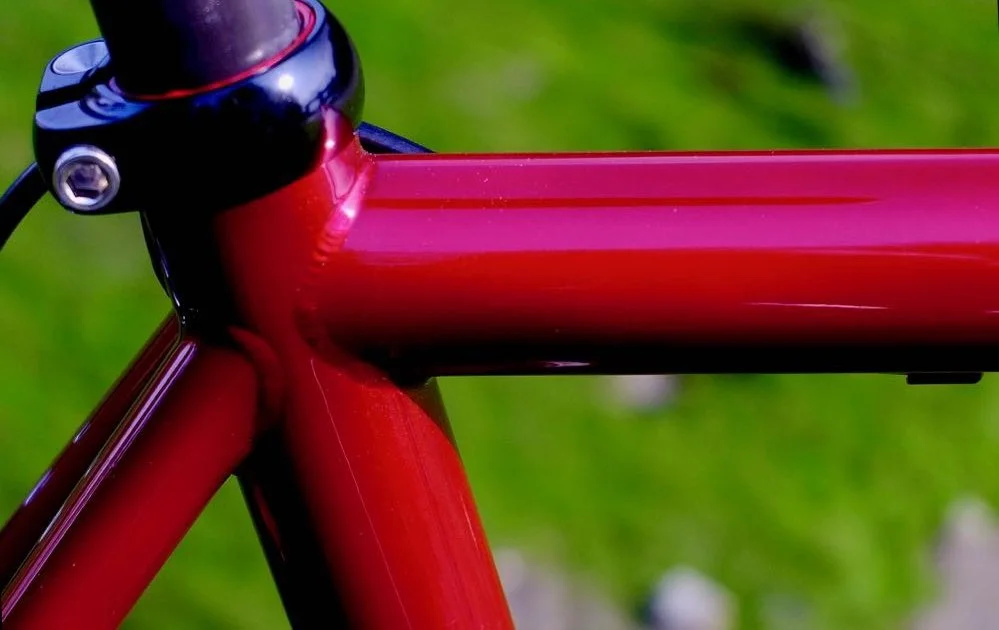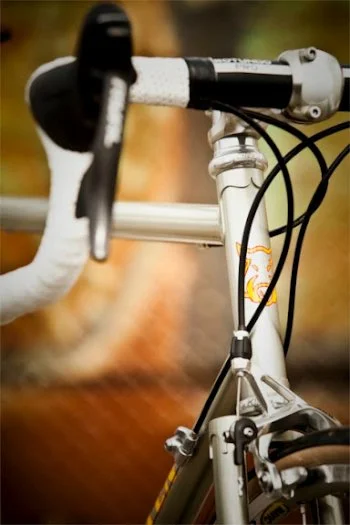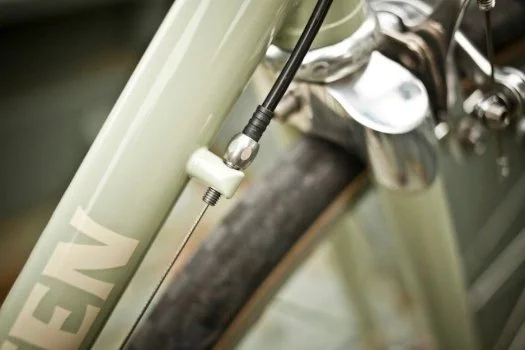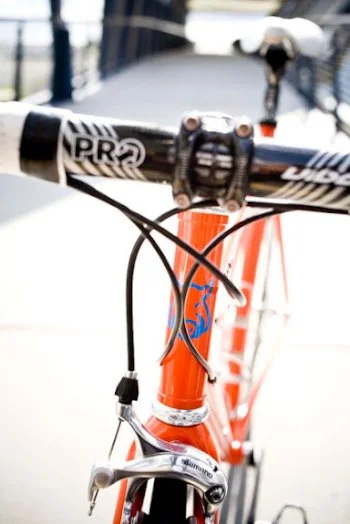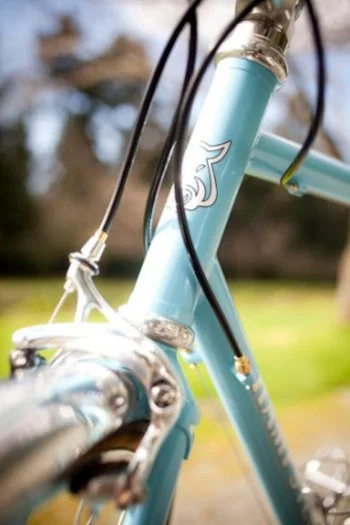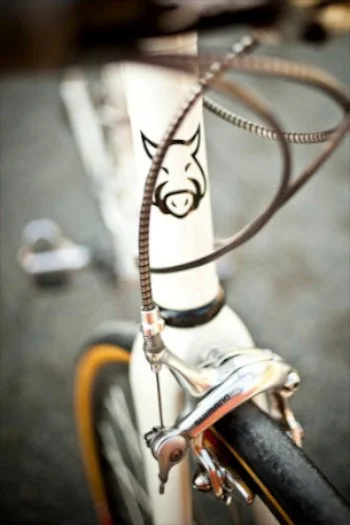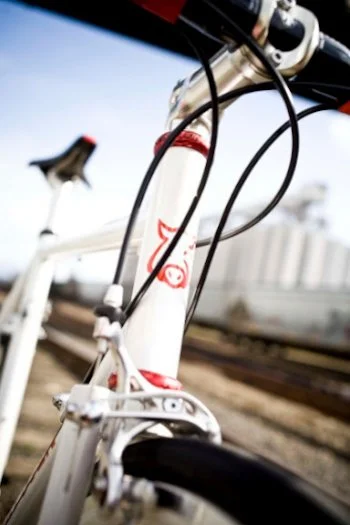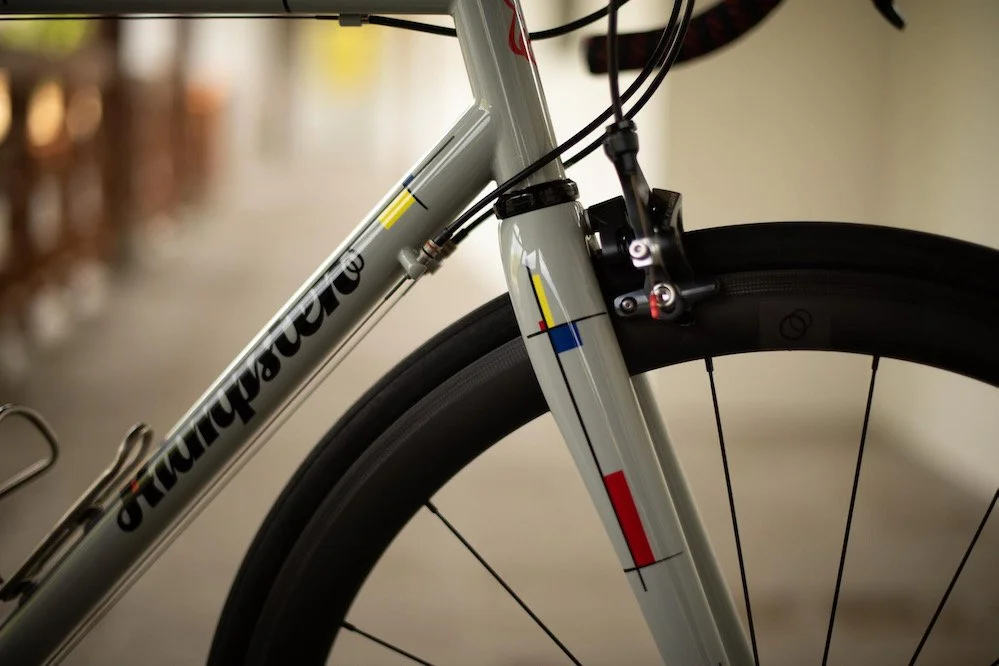
Our Hampsten-branded bicycles and frames reflect many of our past influences and present-day experiences, as well as a long-abiding love of riding bicycles and a desire to implement our ideas on bicycle design. While both looking back at the past and ahead to the future our designs focus on joining the best materials using both classic and modern construction techniques, but always with a traditional outlook.
DESIGN
Here at Hampsten Cycles our ideas about how a bike should fit and ride have been strongly influenced by Andy Hampsten’s many years of racing and riding. During Andy’s 22-year racing career he worked closely with coaches Eddy B, Paul Koechli, Eddy Merckx, and Dr. Max Testa, who all helped refine his riding technique and position. Andy’s career is covered in more detail elsewhere on this site and on the Internet.
Andy and Steve Hampsten started racing and touring in the mid-1970s. After working in bicycle shops, followed by several years of cooking in high-end restaurants, the mid-to-late 1990s found Steve exploring welding, blacksmithing, metal fabrication, and furniture design. This was then followed by bicycle frame construction at match bicycle company just outside of Seattle. Steve and Andy started Hampsten Cycles in 1999.
FRAME FIT
A properly fitted road bicycle is centered on the stem, which we think of in terms of sizes: small (90-100mm, for frames in the 50-54cm range), medium (110-120mm, for 54.5-57cm range), and large (120-130mm, for 57.5cm and up range). A bicycle built around the proper stem length, giving correct reach, will have optimal weight distribution and handling characteristics.
We believe that the cure for a poorly fitting bicycle is not a longer/shorter stem but rather a well-built frame using the correct length stem. Your saddle height and the drop to your handlebars are taken into consideration when suggesting seat tube and head tube length. We use BikeCAD as a drawing tool and we are not shy about making fit and size recommendations.
Versions
We organize our bicycle models using two methods: by tire size and by the technology involved. Some mixing and matching between different models happens frequently.
Versions based on tire-size
Gran Paradiso is intended for fast road riding, training, and racing using 23-28mm tires, short-reach calipers, and a carbon fork
Strada Bianca is our choice for a stable, comfortable ride on gravel or rough roads using 25-35mm tires, medium-reach (57mm) calipers, possibly fenders.
Versions based on technology
Il Mostro is designed around disc brakes for a variety of road surfaces and tire sizes and we have two great iterations: Tranquillo, which takes up to a 32mm tire; and Sterrato, which takes up to a 44mm-ish tire.
Team Pro is our steel frame using cast lugs and BB shell – several options are possible.
Our forks are made from steel or carbon fiber. We use carbon forks from Columbus, Enve, Falz/Pegoretti, Moots, Ritchey Design, and Whiskey Parts Co. They all make great products, provide a wide range of models to choose from, and all forks we sell will work with 28mm tires at a minimum. Our Strada Bianca and Team Pro models use a steel fork which we make right here at HampCo Seattle.
MATERIALS
Steel has come a long way with the development of thin-walled oversized tubing, which can be heat-treated and air-hardened for maximum strength. This allows us to build a lighter frame that provides a livelier road feel than was the case with steel frames of the past. We feel because of its strength, resilience, ride, and relative ease of working that steel is still one of the best all-around materials for a bicycle frame. We use primarily Columbus for our steel tubing.
Titanium has proven itself to be an excellent material for bicycle frames. Less dense than steel – and more elastic than aluminum, carbon, or steel – titanium is an excellent choice for riders seeking a light, comfortable, and durable frame. We use US-made 3/2.5 straight-gauge for our ti builds.
Aluminum is a material that seems to be making a comeback in the high-end frame market of late. Less dense than steel or titanium, aluminum provides more road feedback than most frames – which can be good or bad, depending on your perspective. We like aluminum frames here but we’re not currently offering them.
Carbon fiber is particularly well suited for use in forks as well as frames. The beauty of carbon is that it can be flexible where needed – for example along the fork blades and stays – and strong and stiff elsewhere, particularly at fork crowns and tube intersections.



